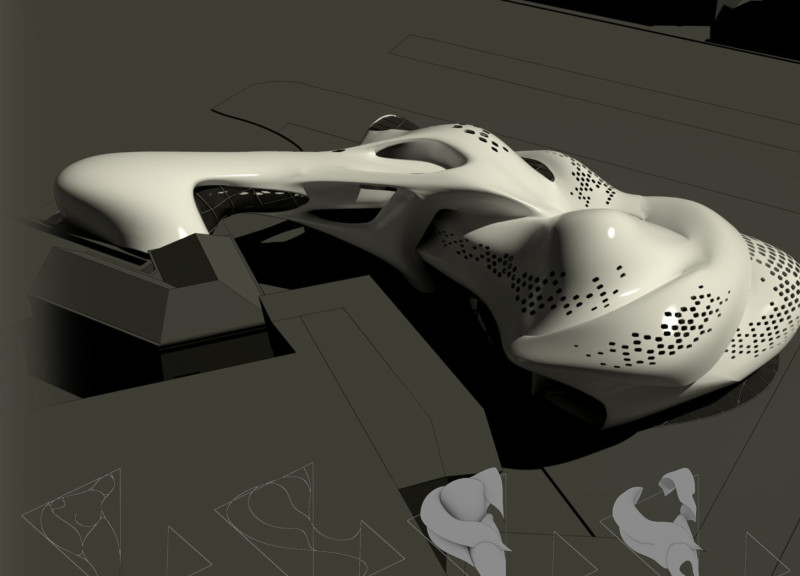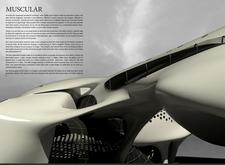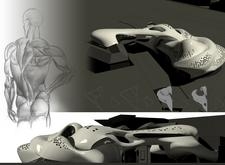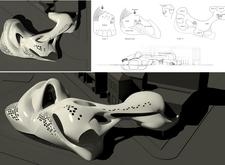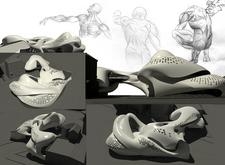5 key facts about this project
### Project Overview
Located in Australia, the project titled "Muscular" seeks to establish a cultural landmark that reflects the significance of tattoos within the context of Australian heritage and identity. The design responds to the historical narratives woven into the nation's rich indigenous and multicultural backdrop, positioning itself as a space for exploration and discussion of personal and collective identity.
### Conceptual Framework
The design concept draws an analogy between architecture and human anatomy, utilizing anatomical references to inform the building's shapes and spatial organization. The emphasis on organic forms mimics the dynamic structures of human musculature, generating an engaging environment that invites users to connect both visually and emotionally with the space. This approach aligns the building's aesthetic with its cultural intent, fostering a dialogue around the visceral nature of tattoo art as a reflection of personal identity.
### Materiality and Architectural Composition
The material choices are integral to the project’s conceptual depth. Robust concrete structures create sculptural forms, while expansive glass openings facilitate natural light and enhance visibility between interior and exterior spaces. Steel elements provide structural support, ensuring durability without compromising on elegance. Additionally, textured panels may be employed to evoke skin-like surfaces, reinforcing the theme of bodily representation.
The architectural composition is delineated by two primary interlinked forms that embody muscular characteristics. The ground level accommodates essential functional spaces, including a parking facility, an inviting lobby, an art gallery dedicated to tattoo exhibitions, and practical classrooms for tattoo artistry. The upper level features residential quarters designed for artists and visitors, alongside a communication space that fosters interaction among users. This thoughtful organization caters to a diverse range of functions while promoting community engagement and cultural exchange.


